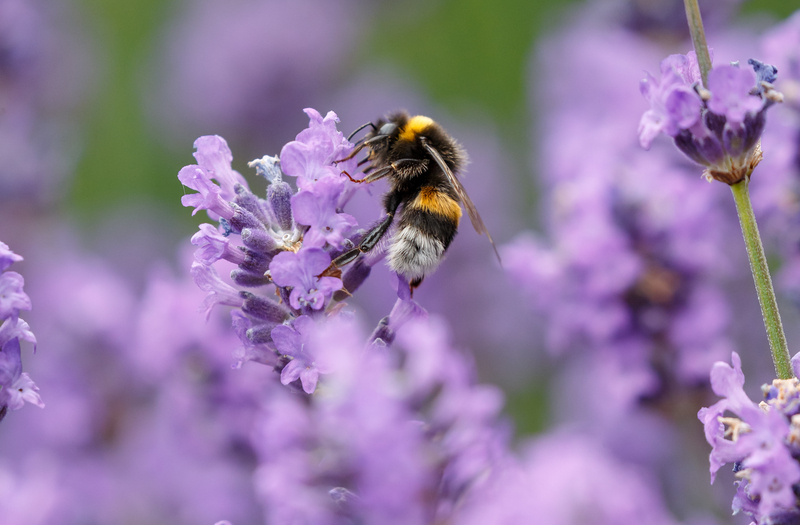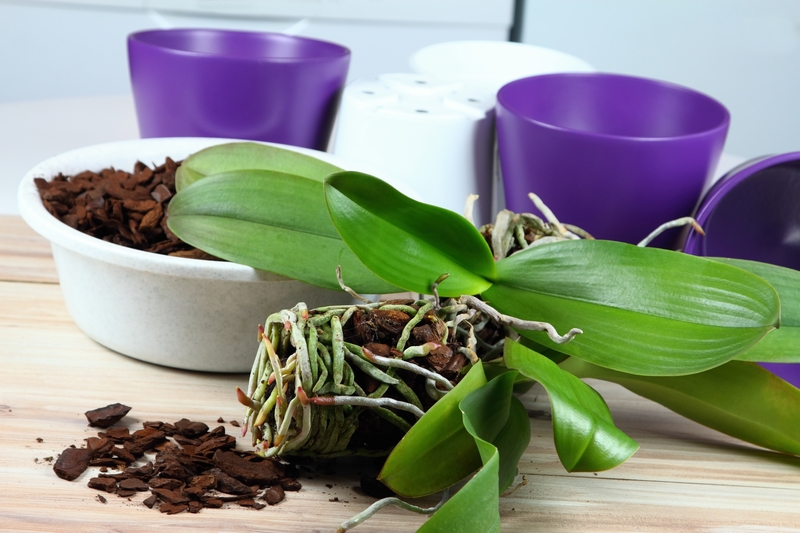Environmentally Friendly Ways to Remove a Tree Stump
Tree stumps can be unsightly obstacles in a yard or garden, often left behind after tree removal. While there are quick and aggressive methods to get rid of stumps, these can harm the surrounding environment, degrade soil health, and even pollute your landscape. Choosing eco-friendly ways to remove a tree stump not only preserves the integrity of your land but also benefits local ecosystems, reduces chemical use, and promotes sustainability. In this comprehensive guide, you'll discover green, effective, and safe solutions for tree stump removal.
Why Choose Environmentally Friendly Tree Stump Removal?
Removing a tree stump is about more than aesthetics. Stumps can:
- Attract pests and fungi
- Encourage new, unwanted tree growth
- Cause trip hazards in gardens and yards
- Interfere with landscaping and new plantings
However, traditional stump removal methods--like burning, harsh chemicals, or heavy-duty grinding--can have serious environmental impacts. These include:
- Soil and groundwater contamination from herbicides
- Air pollution from burning stumps
- Loss of beneficial soil organisms
- Erosion and structural damage to nearby plants
Opting for sustainable stump removal methods not only protects the environment but can also save money, improve garden health, and foster biodiversity.

Manual Tree Stump Removal Techniques
1. Digging Out the Stump
The most straightforward and eco-friendly method for removing a tree stump is by digging it out manually. This method requires a bit of elbow grease, but virtually no chemicals or fuel are needed.
Steps:- Use a shovel to dig around the stump and expose the roots.
- Cut through the roots with a hand saw, mattock, or an axe. For larger roots, a root saw can be handy.
- Continue to dig and cut until the stump is loosened from the ground.
- Pry the stump out, using a lever (like a sturdy branch or pry bar) for leverage if needed.
- Fill the hole with soil and add grass seeds or mulch to restore the area.
Advantages: Completely natural approach; preserves soil health and biodiversity.
Disadvantages: Labor-intensive and may not be suitable for very large or deep-rooted stumps.
2. Using Root Cutting and Leveraging Tools
Sometimes, simply digging isn't enough, especially with stumps that have extended, stubborn root systems. Employing specialized hand tools such as a mattock, pickaxe, or a manual root saw can make the work easier and more effective without resorting to machines or chemicals.
- Pickaxe or Mattock: These tools are designed for breaking tough soil and cutting through roots.
- Root Saw or Bow Saw: Perfect for sawing thick, woody roots.
- Lever Bar: Helps to lift the stump once it's free from most of its roots.
By using these tools, you engage in a totally eco-friendly method for tree stump removal that produces no pollution and disturbs the local ecosystem minimally.
Pro Tips:
- Wet the soil a day before to make digging easier.
- Wear protective gear, including gloves and sturdy footwear.
- Have a friend help with heavy lifting.
Natural Stump Decay: Accelerating Decomposition
Instead of physically removing the stump, let nature do the work. All stumps will eventually break down, but there are environmentally friendly stump removal techniques to speed up the process using organic means.
3. Encouraging Rot with Compost and Soil
Decomposition is a process driven by moisture, microbes, and fungi. By encouraging these natural agents, you can convert the unwanted stump into fertile organic matter.
How to Do It:- Drill holes into the top and sides of the stump, about half an inch wide and several inches deep.
- Fill these holes with a mixture of rich topsoil and compost.
- Water the area to keep it moist.
- Cover the stump with a tarp, mulch, or a thick layer of organic material. This retains moisture and heat, promoting decay.
- Optional: Sprinkle a bit of high-nitrogen fertilizer to accelerate microbial activity, but make sure it's organic and used sparingly.
Over several months to a year (depending on stump size), the wood will become spongy and soft--easy to chop out and remove.
4. Inviting Fungi: Using Mushrooms to Decompose the Stump
Fungi and mushrooms are some of nature's most powerful decomposers. By inoculating your tree stump with edible or inedible mushroom spawn, you can hasten the rot process and even harvest mushrooms as a bonus.
Steps to Use Fungi for Stump Removal:- Obtain mushroom plug spawn from a reliable supplier (e.g., oyster, shiitake, or wine cap mushrooms).
- Drill holes into the stump as directed for the spawn.
- Insert the plugs and seal them with wax (optional, per supplier instructions).
- Keep the stump moist and shaded as much as possible.
This method is slow (usually 1-3 years), but you get the ecological benefit of recycling the stump into rich, organic soil and potentially food for your kitchen.
Non-Chemical Stump Removal Methods
5. Solarization: Using a Tarp to Starve the Stump
Solarization involves covering the stump with black plastic or a heavy-duty tarp, blocking sunlight and rain. This limits the stump's access to energy and can cause it to die and decompose faster.
- Cover the entire stump (and any exposed surface roots) with an opaque material.
- Weigh the cover down with rocks or stakes to ensure it doesn't blow away.
- Leave in place for several months up to a year. Check periodically and reapply as needed.
This method is especially effective for preventing new shoots, as the lack of sunlight stifles regrowth.
6. Boiling Water or Hot Water Flood
Some stumps, especially small or recently cut ones, can be weakened by a regular application of boiling water. Hot water:
- Destroys the living tissue inside the stump
- Speeds up decay and makes the wood softer for removal
- Undermines the ability of the roots to send up new shoots
Use caution to avoid scalding yourself or harming nearby beneficial plants. This is an effective, natural, chemical-free option for tree stump removal.
Mechanical and Low-Impact Solutions
7. Renting a Manual Stump Grinder
Powered stump grinders can be harmful due to fuel use and risk of soil disturbance. However, for larger stumps, consider a manual (non-motorized) stump grinder. These hand-crank devices use sharp, rotating discs to slowly grind down a stump without gas or oil.
- Zero emissions
- Saves energy versus full-size grinders
- Minimizes neighborhood disturbance
After grinding, reuse the wood chips as mulch in your garden for true sustainability.
8. Winching or Pulling for Small Stumps
If a stump is already loose or small, a come-along winch or vehicle chain pull can be used. Always take safety precautions and ensure you have the proper anchor point.
- Attach a sturdy chain around the base of the stump.
- Connect the chain to a winch (manually powered), or a vehicle in low gear (never accelerate quickly).
- Slowly increase tension until the stump is freed.
This is a low-impact method if the winching is performed with manual tools or electrically powered equipment using renewable energy.
Creative and Alternative Eco-Friendly Stump Removal Solutions
9. Turning the Stump into Habitat
Sometimes, the most sustainable solution is to embrace the tree stump as a natural resource in your garden. Consider:
- Creating a woodland habitat for insects, fungi, and small animals
- Planting climbing vines or flowers on it to disguise the stump
- Painting, carving, or sculpting the stump as a garden centerpiece
Not only does this reduce labor and waste, but it actively enhances your local ecosystem.
10. Using Native Plants and Groundcovers
Dense plantings on and around the stump can camouflage and accelerate its decay. Certain plants, like mosses, ferns, and groundcovers, love the organic-rich, moist environment created by rotting stumps.
- Reduces erosion and stabilizes soil
- Adds visual interest to the landscape
- Attracts pollinators and beneficial insects
What Not to Do: Harmful Stump Removal Practices
In the quest for convenience, some common methods cause long-term environmental damage:
- Chemical stump removal: Many commercial solutions contain potassium nitrate or herbicides that infiltrate soil and groundwater.
- Burning: While it seems effective, burning releases harmful gases, can spark wildfires, and damages healthy topsoil.
- Heavy machinery overuse: Large stump grinders and excavators can cause soil compaction, destroy root systems of desirable plants, and use fossil fuels.
Always opt for green and sustainable tree stump removal alternatives to ensure a healthier outdoor space for humans, pets, and native wildlife.

Frequently Asked Questions about Eco-Friendly Tree Stump Removal
How long will natural stump removal take?
It varies greatly depending on the stump size, species, weather, and method. Manual removal is immediate upon completion, while natural decay methods can take from a few months to a few years.
Are there environmentally safe stump killer options?
While some companies market "natural" stump killers, always read labels and research ingredients. Organic nitrogen boosters and mycelium (fungus) plugs are two of the safest options.
Can tree stumps regrow after removal?
For certain species, roots can send up suckers even after the main stump is gone. To prevent this, remove as much of the stump and major roots as possible, use tarping or repeated cutting, or accelerate decomposition.
What should I do with wood chips or stump debris?
Reuse all stump debris as mulch, compost, or garden pathways. This is an ideal way to close the loop and keep organic matter onsite.
Conclusion: Embrace Green Stump Removal for a Healthier Landscape
Environmentally friendly tree stump removal is about balancing practicality with respect for nature. With a little creativity and patience, you can remove or repurpose tree stumps naturally -- safeguarding soil, water, and local wildlife. Whether you choose to dig, decompose, disguise, or repurpose, green methods are better for both your landscape and the Earth.
For best results, choose the technique that matches your stump size, available tools, and desired timeline. Wherever possible, avoid chemicals and heavy machinery to foster discovery, biodiversity, and sustainability in your own backyard.
Remember: Eco-friendly stump removal isn't just about clearing space -- it's about nurturing life for years to come.